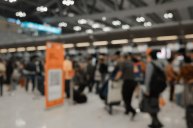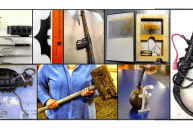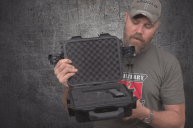The Transportation Security Administration announced that it broke its six-month record for intercepting firearms at airport security checkpoints across the country. According to Tuesday's announcement, TSA officers collected their 3,269th firearm on July 7, which amounts to 18 more than the year before.
David Pekoske, TSA's administrator, explained that part of the reason for breaking the half-year record was because officers screened more passengers this year than last. According to TSA data, nearly 7% more people (or 15 million) traveled so far this year than last.
"During a period of record-breaking travel volumes, our officers are working hard to keep our transportation systems secure and the traveling public safe, and any time they detect a firearm, there is a real safety concern for frontline employees and travelers," Pekoske said.
According to the TSA, officers intercepted 166 additional firearms in the first eight days of July, bringing the annual total to 3,435. With the half-year total being what it is, TSA said it amounts to an average rate of 19 firearms per day (or 7.9 for every one million passengers).
As for what happens to the firearm once TSA officers intercept it, they will contact local authorities to unload and take possession of the gun. After that, local authorities may cite or arrest the individual stopped with the firearm. However, the laws vary by state. The TSA could also issue a fine up to $15,000.
How to pack a firearm for air travel
According to TSA's website, federal law prohibits firearms at security checkpoints, in secure areas of airports, and inside the passenger cabin of an aircraft. The agency advises that if you plan on traveling with a firearm, you should secure it in your checked luggage. You should pack it unloaded and locked inside a hard-sided case. And, you should also declare it to the airline at the ticket counter before entering the security line.
"If you carry a firearm, you are required to place it unloaded and locked in a hard-sided case in your checked bag and declare it to the airline when checking in at the airline ticket counter," Pekoske said. "Do not bring it to the checkpoint. It is costly and delays you and everyone else traveling in the same lane with you."




